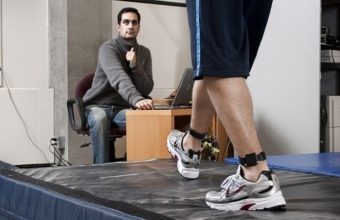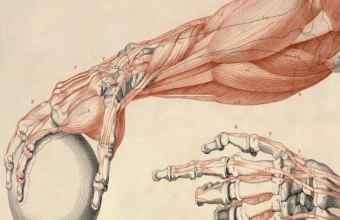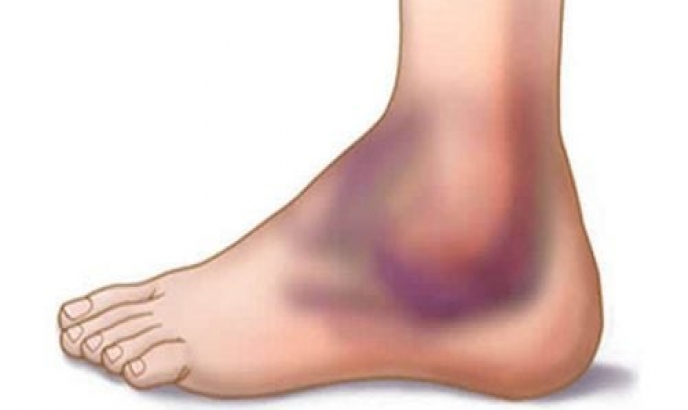Ankle injury
Ankle injury is one of the most common injuries among athletes, and it accounts for half of players' injuries in various sports, especially football. Diagnosis and appropriate treatment is very important when injured, as many injuries are treated in a wrong or incomplete manner, which leads to chronic pain in the ankle that continues in the long run and causes frequent interruptions to playgrounds or exercise.
The most important injuries in the ankle joint:
Ankle bruises:
Spoken in all kinds of fencing and jumping (high triple long pole), handball, basketball, volleyball and gymnastics
Causes and symptoms:
The impact of the ankle (the heel of the foot) with a hard ground leads to swelling with pain when touched, and pathological inflammation of the tissues may lead to the removal of the bones from their place ..
protection :
Avoid training on hard ground
Use pressure bands around the foot or a sponge
Wear suitable shoes with a thick heel and a relatively high heel to protect the ankle
Ankle fractures:
It is a complete fracture or crushing of the ankle joint, and it may occur in the concavity of the end of the shin bone from the outside in the lower leg, and it occurs due to the twisting of the inversion and the pushing force of the body leads to the fracture of the bone, and it is common in basketball and in sports that require running.
Causes and complications:
Wrap over the outer ankle area.
Foot rotation with the force of the leg when the feet are stationary
Lateral rotation of the ankle joint at non-physiological limits to joint movement
- The fracture is either simple or complex, and often the ankles are affected together or the ankle is affected with the ends of the shinbone and is usually accompanied by a subluxation of the foot. Complications of the injury in case of insufficient treatment lead to the fall of the meniscus down and when sprained it leads to arthritis.
Symptoms:
Pain directly over the affected area.
- The area is deformed at the moment of injury.
Severe electric shock followed by numbness
Sprained ankle joint:
It is a complete stretching or tearing of one or more of the ligaments that bind the ankle joint together, and the sprain of the ankle joint is one of the many injuries and common among athletes, and basketball players are exposed to this injury as well as sports that require jumping and running. It occurs suddenly as a result of the foot being exposed to an internal tipping with plantar bending during exercise or while walking on uneven ground. The sound of the ligament tearing is often heard during the injury as a result of the rotation of the foot.
Types of sprains:
Inversion torsion:
It is one of the common sprains, and it occurs when the leg is rotated outward from the ankle, causing the proximal calcaneus ligament, and in 20% of cases, the fibular talus ligament is affected
Reflex torsion.
It is caused by an increased outward rotation of the ankle and is less common than an inversion sprain and uncommon.
The stretching or tearing of the fibers is determined by the extent of the damage to the outer ligaments
Ligaments around the ankle joint:
Lateral ligament:
It consists of three fibrous bundles (posterior - anterior - inferior) that extend from the heel to the fibula bone
The medial ligament:
It is part of the deltoid ligament and is one of the strongest ligaments of the ankle joint and is rarely torn
Inner ligament:
It is a triangular ligament that connects to the medial side of the ankle joint.
Degrees of ankle sprain:
A sprain is classified according to its severity into three degrees:
first degree :
Or the simple one when 25% of the fibers are torn and the stability in the joint is not affected and is characterized by the following symptoms:
Mild pain with localized swelling.
Loss of joint flexibility.
Ankle instability
Fixed my job without bruising
Second degree :
Or medium, if 75% of the fibers are torn and characterized by the following symptoms:
Sensation of a sound in the joint (crackling)
Torn ligaments over the ankle with swelling
The bruises appear 3-4 days after the injury
Difficulty walking
Third degree:
Or severe if more than 75% of the fibers are torn, which leads to joint instability with significant joint instability and is characterized by the following:
Articular bones slipping out of place.
Swelling and flexibility in the outer area near the ankle joint.
High flexibility and instability of the joint.
Difficulty walking with joint deformity.
the reasons :
Falling to the outside while the angle and weight of the body are pushed inward too hard, causing the rupture
- Rolling over the outside, causing deformation of the joint
Jumping, then landing on the opponent's feet
- Skip the edge
Signs and symptoms :
Pain, swelling, and pain on palpation of the anterior ligament
Swelling is noticed in at least 60% of cases of severe ankle sprain within 48 hours of the injury
Color change to dark blue on the surface of the foot
The range of motion of the joint is determined by pain, swelling, and inability to walk
A popping sound is noticed at the location of the capsule of the joint and the posterior ligaments
Loss of general balance and the inability of the foot to bear body weight
Decreased muscle strength in the later stages of the injury
Complications:
The results of some studies indicate that 40% of cases of ankle sprain can develop into chronic injuries and cause persistent pain and significantly affect ages under the age of twenty. Among the complications of this injury when treatment is insufficient for this injury, the following are:
- Chronic instability in the foot and weakens its muscular capacity, leading to recurrence of injury
Fractures can be caused by mechanical reasons.
Chronic pain and swelling that leads to the joint losing its normal functions
- The sclerotic torsion can cause a tear in the network before the finger, and this causes injury to the tissue fascia that holds the tendons before the finger, which may lead to repeated change of the position of the tendon before the finger, ie chronic instability.
treatment :
Treatment is done after the correct diagnosis, which plays an important role in the healing of this injury, by manual testing (pull test) for the stability of the ankle joint, and the need for radiological diagnosis to ensure that there is no fracture in the joint.
And treatment may vary according to the degree of injury, and resting the affected joint is important in treatment.
 Arabic
Arabic
 English
English







يوسف احمد
07 Jan2021 08:18 pm
التوى كاحلي قبل فترة واستفدت من هذه المقالة